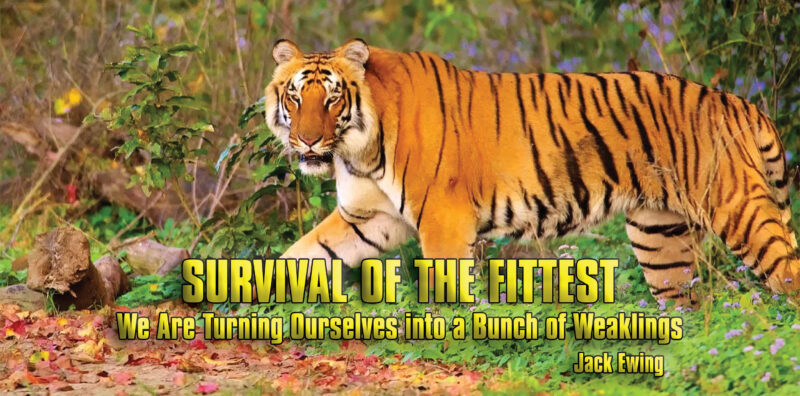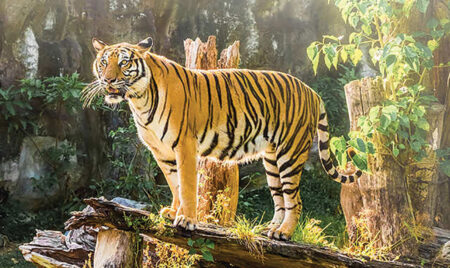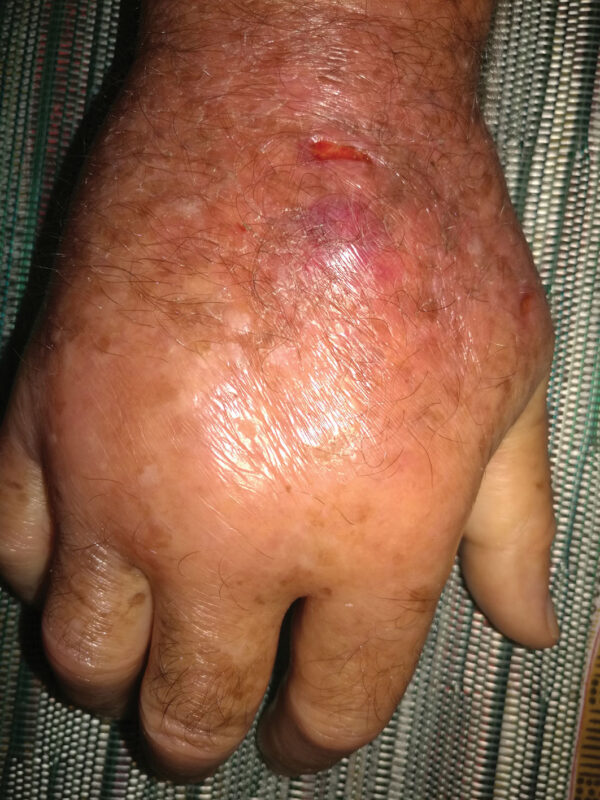Survival of the Fittest

Somewhere between 15,000 and 10,000 years ago we humans decided that we were superior to Mother Nature and were no longer subject to Her laws. As our intellect grew, so did our ability to harness energy and bend it to the exclusive use of our own species. Our numbers burgeoned while countless other living beings on Earth paid the toll. Few humans in this day and age realize that we are still, and always have been, subject to the whims of Mother Nature. In the wilds, species that become too numerous or that capture too large a share of the available resources eventually become victims of some sort of calamity that extinguishes their numbers entirely or severely reduces their population. It is obvious that humanity has been capturing a grossly disproportionate share of the earth’s resources for the exclusive use of our own species and continue to invent methods to capture an even larger portion. One day we will add that proverbial last straw that broke the camel’s back, and Mother Nature will unleash her power on humanity. At the moment she is just setting us up. She is smiling while we turn ourselves into a bunch of weaklings. Let me illustrate with a couple of examples.
 Dalkania India 1930
Dalkania India 1930
Jim Corbett National Park is the oldest national park in India. Its founder, the late Jim Corbett, was a famous hunter, photographer, conservationist, and author. Though he preferred to photograph wild animals he would on occasion kill tigers and leopards that were bothering villages. 100 years ago in India, tigers were much more abundant than today, and certain individuals, perhaps weakened by old age or injuries that impaired them from hunting their normal prey, turned to killing humans and livestock. In his book, Man-Eaters of Kumaon, Corbett tells of several man-eating tigers, one of which was the man-eater of Chowghar, that claimed a total of 436 human lives before he shot and killed her. While hunting the tigress, the village where he had camped was called Dalkania. Rural India in the 1920s was very primitive, accessible only on foot, and the villagers were very poor. Life was tough.
One day, upon his return to Dalkania from hunting the tigress, the entire village was gathered around a blood-soaked girl who had been working with a group of women when she was attacked by the man-eater of Chowgar. Terrified by the site of the tigress the rest of the group started screaming and hurried back to the village. For reasons unknown, the tigress moved away and left the girl alone, probably thinking of returning later to eat her. In spite of her grave wounds, the girl crawled back to the village. The crowd, including the girl’s husband, rushed up to Jim and begged him to doctor the victim. Astounded by the sight of her and amazed that she was still alive, he nevertheless agreed to do what he could. The most severe wound was a deep laceration, made by one of the tigress’ claws, from between the girl’s eyes across the top of her skull and down to the nape of her neck. Part of her scalp was hanging down to the left and the rest to the right. Additionally, there was a bad gash on one of her breasts and lesser wounds on her neck and hand. There were no medical supplies in the village, not even basic first aid. Corbett got the women to boil water while he tore a clean shirt that he had in his pack into strips to use as bandages. He asked for a pair of scissors with which to cut the girl’s hair, but the only pair to be found wasn’t suitable. It was owned by the widow of a tailor, and since her husband’s death she had used the scissors to dig potatoes. All Jim could do was clean the wounds as thoroughly as possible, fit the two sides of her scalp back together and tie them into place with the strips of his shirt. He had a two-ounce bottle of a yellow liquid which had been given to him by a doctor friend. This he emptied into the girl’s wounds. That was all that could be done for the victim of the man-eater of Chowghar. He left the girl with her family and her young baby. Ten days later when passing through Dalkania, Jim Corbett stopped by the hut to inquire about the patient and, to his surprise, found her sitting in the doorway nursing her baby, her wounds having healed amazingly well. The victim was one tough girl, and she passed the genes that made her that way on to her children.
 Hacienda Barú, Costa Rica 2019
Hacienda Barú, Costa Rica 2019
One morning when trying to pull a cranky old dog by the collar, I was bitten on my right hand. The wound consisted of two points where the canine teeth had broken through the skin, both of which bled profusely, and two minor bit marks. I left the dog and went straight to the bathroom where I washed my hand with clean, water and soap, followed by a thorough dousing with alcohol gel and a generous application of tincture of iodine. As the blood was still oozing, Diane bandaged my hand with sterile gauze pads and adhesive tape. The following day, once the bleeding had stopped and the blood dried, we started applying antibiotic ointment. I felt assured that my hand would heal properly and be as good as new in a few days. Instead, the pain and swelling increased to the point that I went to a hospital in Quepos where they gave me an injection of long-acting antibiotic, 10 days of antibiotic in pill form, a new and stronger antibiotic salve, and they redressed my hand. Over the next week there was no perceivable improvement, and I was getting anxious and thinking about other options. One day while massaging my hand the larger of the two wounds burst open and splattered my face with pus. I massaged my hand until all of the pus was out and cleaned the area with alcohol gel followed by antibiotic salve. The doctor prescribed a second round of antibiotic pills. From that moment forward, my hand got better and better and eventually healed completely. It doesn’t take much to imagine what the outcome would have been had all of the medical supplies and medicines not been available. I surely would have died.
Like I said, our own medical advances are turning us into a bunch of weaklings. It wouldn’t take much to cut us down to size. I can think of numerous possible worldwide calamities that Mother Nature could set in motion that would do the trick, but a discussion of these will have to wait until near the end of my upcoming book, The Nature of Mother Nature.
Jack Ewing was born and educated in Colorado. In 1970 he and his wife Diane moved to the jungles of Costa Rica where they raised two children, Natalie and Chris. A newfound fascination with the rainforest was responsible for his transformation from cattle rancher into environmentalist and naturalist. His many years of living in the rainforest have rendered a multitude of personal experiences, many of which are recounted in his published collection of essays, Monkeys are Made of Chocolate. His latest book is, Where Jaguars & Tapirs Once Roamed: Ever-evolving Costa Rica.
